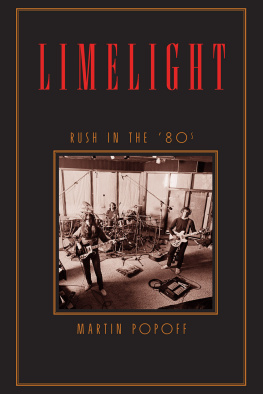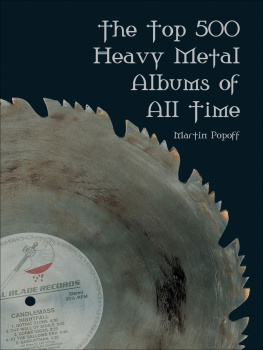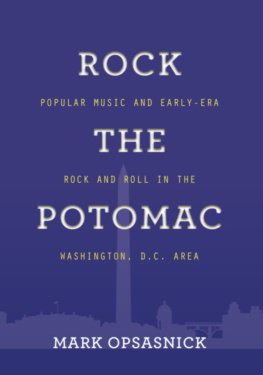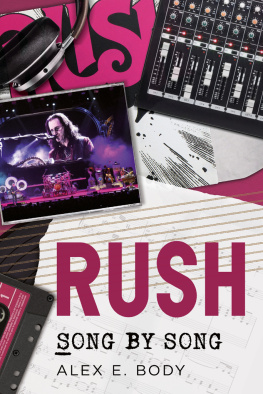The comparison is a lark but its funny, so Ill give it anyway.
Under the black country skies of Trail, British Columbia, in the mid-70s, heavy metal ruled. It was as big a deal in my hometown as in the dual cradles of metal civilization Detroit and Birmingham. Where they had steel and car parts, we had a lead and zinc smelter, an employer of thousands in our small town and a satanic mill that sat on the hill, looming over the city center. In fact, thats where you went after high school if you werent going to university; you went to work up the hill.
Okay, comparing Trail to the towns where Sabbath, Priest, the Stooges and MC5 were created is laughable. Plus my dad was a teacher, my mom was a nurse and I grew up wanting for nothing in a spacious house built in 1970 by the family in the idyllic suburb of Glenmerry. But me and my buddies were still all angry young metalheads, and Im pretty damn sure we were listening to Rutsey n roll Rush at eleven going on twelve before 1975.
So Working Man indeed, if not exactly for me and my immediate circle. That song really connected in Cleveland, and it made a hell of a lot of sense for the busted-up hard partiers working at Cominco. In my late teens, running the record department and selling stereos at a couple different stores, I got to know quite a few of those people (from a wary distance). They were scary and cool, and more than occasionally they would drop ten grand on a pair of Klipschs, JBLs, Bose 901s or carpet-covered Cerwin Vegas, usually powered by a new Yamaha 3020, much to the delight of my boss Gordon Lee, who still runs Rock Island Tape Centre forty-something years later.
Of course, all these guys were Rush fans too, cranking Bastille Day in their Camaros and Mustangs (yes, Gord threw me in the deep end as an installer) and pontificating over 2112 while they nurtured their private pot stashes growing in the cupboard. They knew about Rush because I sold them their friggin Rush records but also because we had the quintessential rock radio station in KREM-FM, broadcast over the border in glorious high fidelity from Spokane, Washington, where they worshiped these wise Canadian swamis of sound. In fact fond memory they played the entirety of 2112 when it came out, and of course we were all ready with two fingers to hit play and record as the sun set.
But there was another bed-headed gathering of beer buddies poring over the seven Rush albums we will be celebrating in this book, and that was the aspiring players. I was one of those. The day I jumped in my purple 77 baby Mustang (a Toyota Celica) and drove seventy miles to Nelson to pick up my nine-piece set of black Pearls, inspired equally by Neil Peart and Peter Criss, was magic. (Forty years later, I got to show Peter the receipt as he signed some records for me at my book table at RockNCon in London, Ontario.)
Indeed, this is why it was such a joy writing this book, remembering the camaraderie in bands, however short-lived, talking over Neil Peart fills with Darrell and Marc, Geddy bass lines with Pete and Sammy and Alex licks with Mark and Garth and yes, he looked exactly like Garth from Waynes World, and I wasnt too far off Wayne. Rush was our rarefied, mystical music textbook, Neil and his wordsmithing challenging our brains at the same time. (Im sure for a long time, we thought Geddy was scribbling all these fortune cookies.) Rush made you want to excel on a bunch of levels at once, and I swear that was their purpose for high school kids worried about what comes next.
Geez, man, they were perfect. Prog rock proper was too creepy. Tales from Topographic Oceans may have well been the Moonies coming to get you. At the other end, all our metal bands Sabbath, Purple, Nazareth, Rainbow, UFO, Thin Lizzy, Kiss, Aerosmith, the Nuge and at the obscure end, Legs Diamond, Riot, Angel, Starz, Moxy and Teaze were friggin all right with us. But Rush made you try harder. They politely asked to pour your energies into something more positive. Eat right, use those weights in the basement.
Neil was pushing the philosophy and literature at one end, and as players, man, what they did for kids self-esteem is immeasurable. We had a purpose, a hobby that was a never-ending hard nut to crack. And yet I gotta say something about Rush: they made it just this side of attainable. I think if wed got the slide rules out and did the math on Close to the Edge, The Inner Mounting Flame, Aja, Red, Brand X or Buddy Rich, wed have all hung it up. But Neil with his regular rolls down those tuned toms? More often than not, building his beats with only one of his two bass drums? Much of what Rush did... well, you could get there as a kid. I could get there as a kid.
Thats a personal reminiscence of Rush in the 70s, to be sure. But from what Ive gathered from friends all over the world (admittedly, most of them white men in their mid-fifties), its a near-universal experience.
I want to tell you a bit about the history of this book. As you may be aware, this is my fourth Rush book, following Contents Under Pressure: 30 Years of Rush at Home and Away, Rush: The Illustrated History and Rush: Album by Album. And since those, there have been a number of interesting developments that made me want to write this one. To start, only one of those three books, Contents, was a traditional biography an authorized one at that but it was quite short, and given that it came out in 2004 before Rush was officially retired, it was in need of an update. I thought about it, but I wasnt feeling it, not without some vigorous additions.
That, fortunately, took care of itself. In the early 2010s, I found myself working with Sam Dunn and Scot McFadyen at Banger Films on the award-winning documentary Rush: Beyond the Lighted Stage. Anybody who works in docs will tell you that between the different speakers and non-talk footage that has to get into what might end up a ninety-minute film, only a tiny percentage of the interview footage ever gets used, the rest just sits in archive, rarely seen or heard by anyone. Long and short of it, I arranged to use that archive, along with more interviews Id done over the years, plus the odd quote from the available press, to get this book to the point where I felt it was bringing something new and significant to the table of Rush books.
So there you have it, thanks in large part to those guys as well as the kind consent of Pegi Cecconi at the Rush office the book you hold in your hands more than ably supplants Contents Under Pressure and stands as the most strident and detailed analysis of the early Rush catalogue in existence.
Martin Popoff
Chapter 1
Early Years
We didnt have a mic stand so we used a lamp.
No question that the Beatles were and still remain the patron saints of rock n roll. And February 9, 1964, the first of the bands three consecutive appearances on The Ed Sullivan Show, would provide the nexus of that sainthood: that night, the Beatles inspired myriad adolescents to take up the rock n roll cause, including the heroes of our story.















